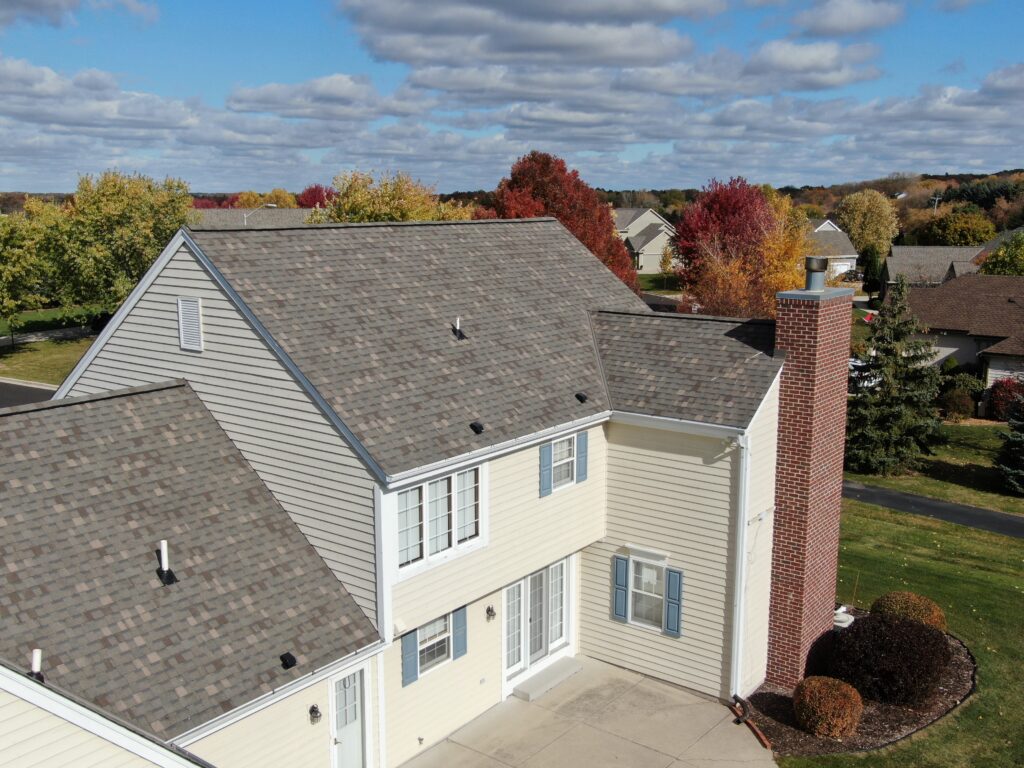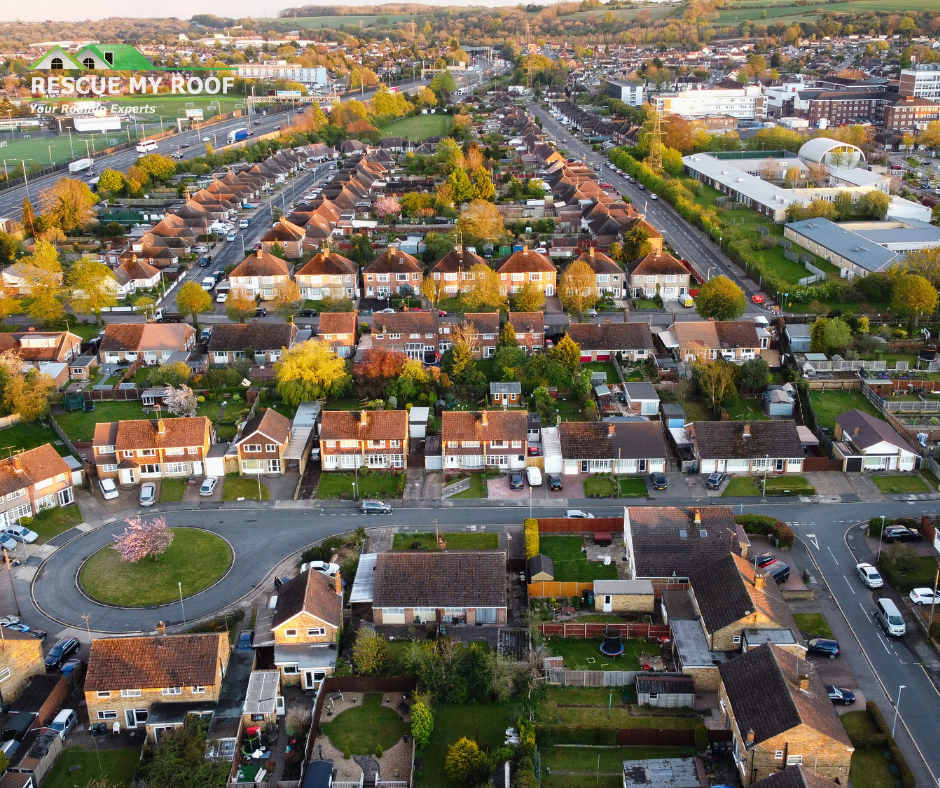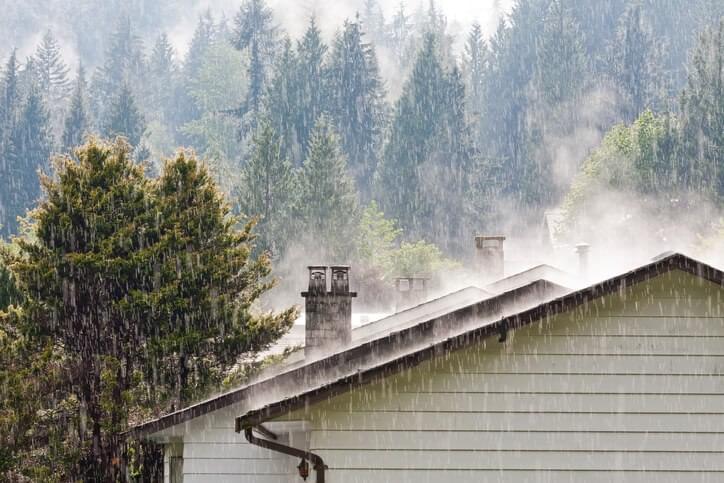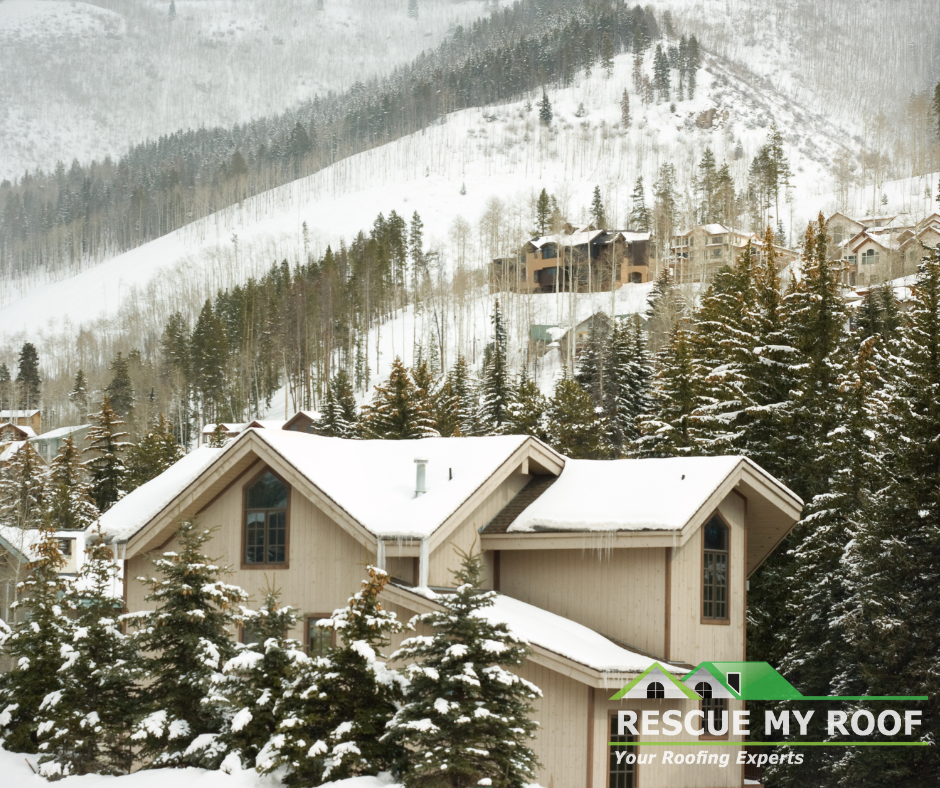6 Reasons Fall is the Best Season for a Roof Replacement
When it comes to replacing your roof, timing is essential. While roofing projects can be conducted year-round, choosing the right season can significantly affect cost, convenience, and the overall outcome.
Rescue My Roof has been working with homeowners for over a decade, helping them achieve their dream homes. We are among the many roofing professionals and homeowners alike who consider fall the ideal season for a roof replacement.
To assist you in scheduling and planning your new roof installation, we’ll explore why fall stands out as the best season for this critical home improvement project.
1. Mild Weather Conditions

Fall typically brings mild and stable weather conditions. Unlike the scorching heat of summer or the unpredictable storms of spring, fall offers a comfortable climate for roofing work.
Roofing experts agree that roofing is best installed at temperatures between 45 to 50 degrees Fahrenheit – precisely the temperatures you see in fall. Roofing materials like shingles and underlayment are more pliable and easier to work with in moderate temperatures, reducing the risk of damage during installation.
When it’s too hot out, shingles get too soft. They are easily ripped and seal before you can adhere them to the roof. Additionally, roofers can sustain burns from handling hot materials.
Conversely, shingles can snap during installation when it’s too cold.
It’s best to replace the roof during the fall when temperatures allow the materials to function as expected.
2. Ideal Temperature Range

The temperature in the fall is generally in the ideal range for roofing projects. It’s not too hot or too cold, which is essential for proper adhesive bonding and sealing during the installation of roofing materials.
Extreme heat can cause materials to soften too quickly, while extreme cold can hinder their flexibility.
Mild temperatures make for an easier and faster installation. The weather is still warm enough to facilitate proper bonding, insulating your roof, but not so cold that shingles don’t adhere properly.
Installing in the fall ensures a healthier roof that seals out water, wind, and ice and keeps your home warm and protected in the winter.
3. Reduced Humidity
Fall typically sees lower humidity levels compared to the summer months. High humidity can affect the curing process of adhesives and sealants used in roofing, potentially leading to poor results.
Lower humidity levels in the fall create an optimal environment for these materials to set correctly.
4. Fewer Weather-Related Delays

Fall weather tends to be more predictable and stable, with fewer unexpected rainstorms or extreme temperature fluctuations. This reduces the likelihood of weather-related delays during your roof replacement project, ensuring it stays on schedule.
5. Preparation for Winter

Replacing your roof in the fall allows you to prepare your home for the harsher winter weather ahead. A new roof is better equipped to withstand heavy snow, ice, and freezing temperatures, reducing the risk of winter-related damage and leaks.
6. Improved Energy Efficiency
A well-installed roof can enhance your home’s energy efficiency. By completing the replacement in the fall, you’ll enjoy improved insulation during the colder months, helping to keep your home warm and reduce heating costs.
Begin Planning Your New Roof Installation
With many ideal days without rain or snow and moderate temperatures, fall may be the perfect season for your contractors to install a new roof.
If you’re still on the fence about making a significant investment in your home – don’t worry. You don’t have to leap to a new roof just yet. If you’re looking for more information about payment methods, home protection, and your role in the installation process, we have just the thing for you.
Read “How Can I Finance My Roof Replacement” and “How Much Does A Roof Replacement Cost?” to learn everything you need to know.
If you’re ready to take the plunge and begin searching for contractors, particularly in southeastern Wisconsin, your search can begin here. Contact Rescue My Roof today to get a free estimate.


